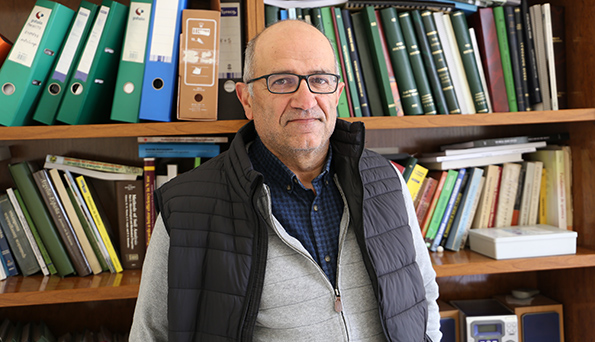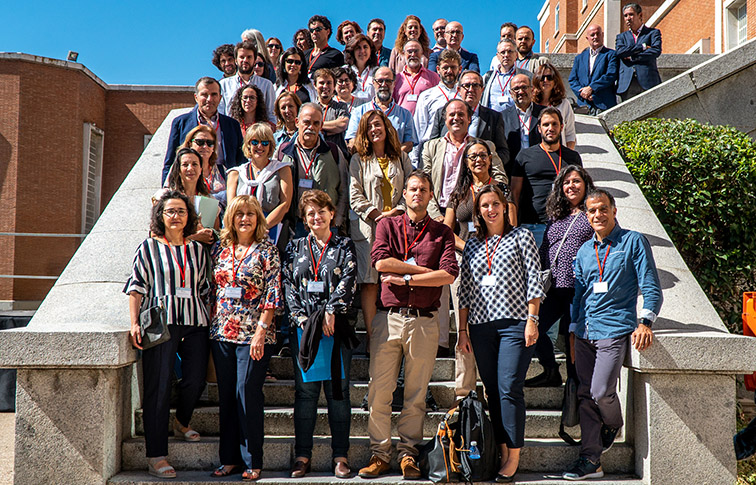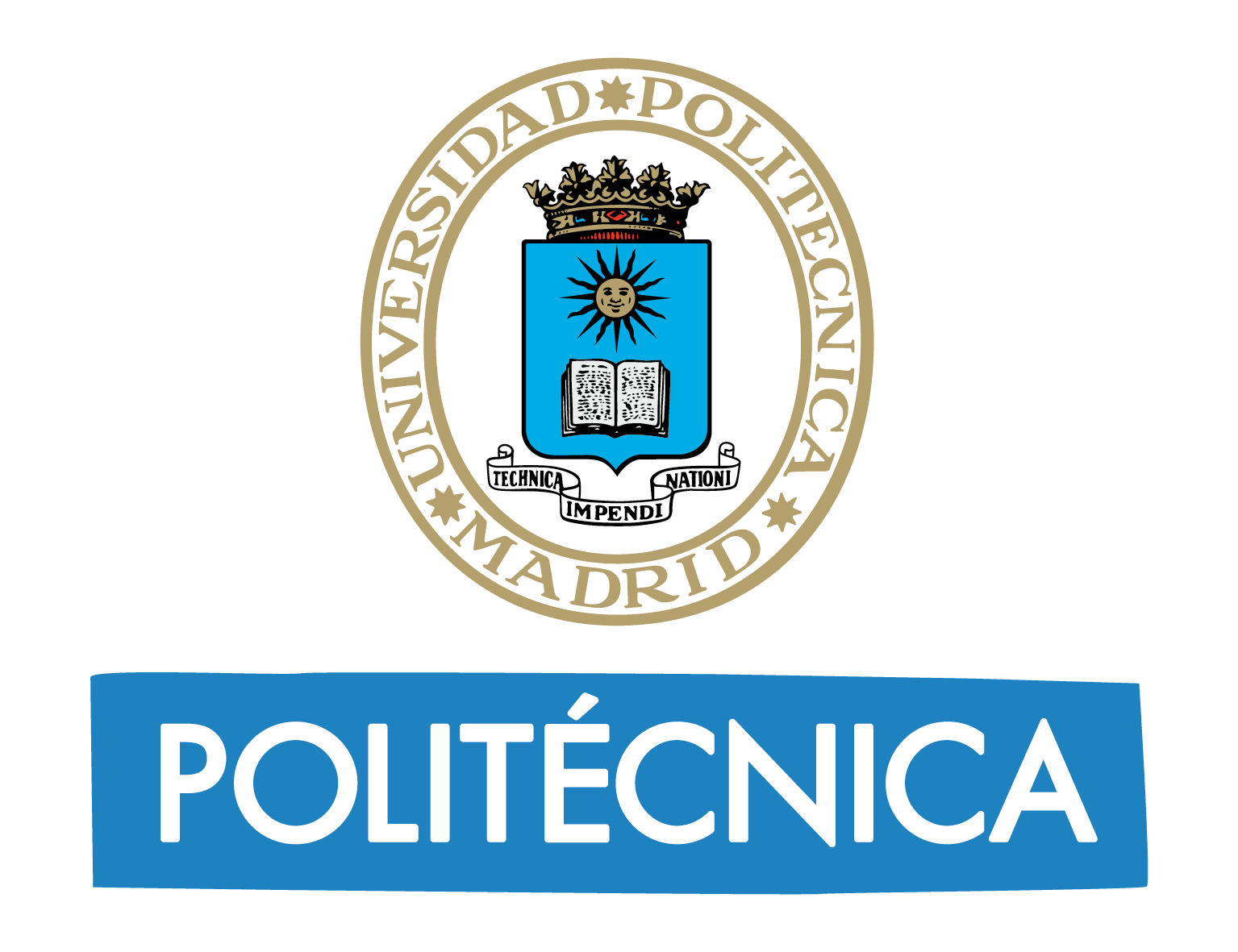Sensor implementation and digitalisation, the future of climate-smart agriculture (CSA)
Five groups of the ‘Escuela Técnica Superior de Ingeniería Agronómica, Alimentaria y de Biosistemas’ (ETSIAAB) are working in ‘Agrisost’, a scientific programme to make sustainability effective in agriculture.
June, 2022
Developing sustainable farm systems is the primary goal of Agrisost, a research programme funded by the region of Madrid (CAM by its Spanish acronym) and the European Regional Development Fund (ERDF). Several groups of the Escuela Técnica Superior de Ingeniería Agronómica, Alimentaria y de Biosistemas (ETSIAAB) have already been participating in Agrisost for twelve years. In this interview, Antonio Vallejo, professor of our School and coordinator of Agrisost, shows us the improvements of this programme within the last four years.
How does Agrisost perceive future agriculture?
The Agrisost programme brings together eight research groups from the CAM, several associated companies and some entities, such as farmers' organisations. It has a critical objective: research technology that promotes our agriculture towards what is internationally known as climate-smart agriculture (CSA), more popularly known as sustainable agriculture.
Our thinking is based on the challenge for future agriculture is maintaining high crop yields. However, at the same time, making maximum use of inputs and minimising the environmental effects of the production process, such as emissions of reactive N gases into the atmosphere, other greenhouse gases and nitrate in water bodies.
We are also working on technology towards what is known as "digital farming", in which sensor implementation, e.g. those sensors based on remote sensing, will be essential to maintain our farming systems' sustainability.
From the start, the programme has had a priority objective of keeping soil quality. The EU is trying to implement all these strategies from now on.
The programme is structured around several objectives; what are they, and what is being worked on?
Indeed, Agrisost is built around seven specific objectives, each with inter-group research activities. To get a more accurate picture, the goals we are pursuing are as follows:
- Goal 1: Develop technologies in the field of nitrogen (N) fertilisers to promote the mitigation of emissions and the reduction of N leaching.
- Goal 2: Develop fertiliser technologies based on inputs that increase food quality. Micronutrient biofortification.
- Goal 3: Promote remote sensing and sensor implementation in decision-making to achieve sustainable farming systems.
- Goal 4: Use plant breeding to increase crop sustainability in a climate change scenario (adaptation and quality).
- Goal 5: Establish technological strategies to improve soil quality and enhance C sequestration in agricultural soils.
- Goal 6: N budgets and modelling as a base for decision making: from the plot to the country scale
- Goal 7: Knowledge transfer from the scientific and technological groups to the industrial and productive sector and to the policymakers in charge of developing agricultural and environmental policies.
Based on field trials, we try to reproduce management systems and agricultural practices and their impact on the efficient use of nutrients with our working tools. The results let us better understand the soil-plant-atmosphere system processes and fit as a basis for developing plant production models. We have prioritised this aspect, trying to propose mitigation and adaptation techniques and assessing different future climate scenarios, including extreme events.

Antonio Vallejo
Agrisost is currently made up of eight research groups in the CAM, among other partners. How many of them belong to the UPM?
In total, five groups are from the UPM and, specifically, from the ETSIAAB, as follows: Contaminación de Agroecosistemas por Prácticas Agrícolas (COAPA), Sistemas Agrarios (AgSystem), Mejora Genética de Plantas (MGP), Sistemas Complejos (GSC) y Calidad de Suelos y Aplicaciones Medioambientales (CASAM).
Work is distributed within each objective. Specific roles and objective coordinators are fixed for every participating group.
ETSIAAB's groups have been collaborating with the Agrisost programme for 12 years. So what assessment can be done after all this time?
That is right; we have been working on this programme for 12 years. This proposal is renewed every four years, and it is very competitive. As I see it, one of the bases of the Agrisost consortium is that we have been able to evolve in our objectives. We have always tried to join the scientific knowledge. All these groups are interested in transferring this knowledge to our sector through the creation of technology. From the outset, the UPM has coordinated this programme, in which research groups from INIA, CIEMAT and the Universidad Autónoma also participate.
This type of initiative focuses a significant amount of human resources funding. Therefore, we have adapted our research to the programme's lines and co-finance the objectives pursued here with other projects. In the last programme, for instance, we have received 748,000 euros from the CAM and the EU Structural Funds, of which more than 430,000 euros are for predoctoral or postdoctoral research staff.
The groups reinforce the objectives by co-financing activities proposed with contracts with companies collaborating as partners in the programme. This strengthening generally aims to create agricultural technology (fertilisers, seeds or digitalisation).

Agrisost group , september 2019
What are the main results and conclusions obtained by Agrisost in the last four years?
The results have produced many publications. For example, in the report of the first 18 months of this last programme, more than 90 SCI articles were published in the Agrisost objectives.
The last four years, co-funded by our business partners, have allowed us to increase our knowledge of how nitrification and urease inhibitors work and how they reduce environmental losses.
We have provided emission factors separated by crops for Spain, which, in collaboration with other Spanish groups, are recognised by the Intergovernmental Panel on Climate Change (IPCC) for arid and semi-arid areas. This means a reduction in the C footprint of our products from Mediterranean areas.
Besides, we have developed biofertilisers with micronutrients (non-synthetic fertilisers). Furthermore, we have improved our knowledge of technology based on sensors installed on aerial systems, such as aircraft, drones, or satellites, to analyse crops' nitrogen and water status and sensor implementation in greenhouses.
On the other hand, we have provided knowledge of modern and old varieties' adaptation to climate change and water and nitrogen stress. Also, on varieties resistant to ozone, one of the pollutants our agriculture has to cope with.
Agrisost research groups have provided valuable data on how agricultural practices can enhance the quality of soil microbiota, which is ultimately involved in nutrient cycling.
Finally, we have worked on technology transfer to several groups of farmers, either directly from the programme or through partnerships with operative groups and European projects.
What can be done to keep moving on technology for farm system sustainability?
Nowadays, sustainability is the key to current and future farm production. The EU' Farm to Fork Strategy' aims to reduce mineral N input by 25% by increasing the use of organics. This is a significant challenge where maintaining or even increasing production is crucial; improving the use of nutrients is needed. This requires technology and knowledge.
Thus, fertiliser companies are adjusting their targets to improve fertiliser use efficiency. They are investing in stabilised fertilisers. Besides, in the organic fertiliser sector, there is an interest in improving supply. It is essential to provide knowledge and technology so that the release of nutrients from these organic sources can be understood and adapted to the needs of each crop. Poor use generally means nutrient loss, which is an environmental problem.
So-called precision agriculture is also progressing, a strategy for better nutrient utilisation that requires sensors. Significant challenges in this area are being made. For example, we do not yet have reliable systems with detectors allowing know the evolution of water or mineral N in the soil. However, algorithms are being developed based on sensors that enable us to estimate the nutritional or water status using the crop as a bio-indicator. Efforts are underway, and cheap technology will probably be available to get this information in the next few years.
In soil quality, strategies are being proposed to improve soil microbiota. Some plans are based on biostimulants, increasing soil C that will help farmers through eco-schemes programmes that must be considered.
Progress will continue in breeding to maintain well-adapted varieties to climate changes and better use of nutrients. However, the approach to many actions requires a fundamental change, and modelling is crucial. Our modelling groups provide valuable decision-making tools at both plot and policy levels.
In other words, there is still much work to be done on sensor implementation and digitalisation. For instance: combining food quality and sustainability, improving soil quality and efficient use of fertiliser inputs, especially organic fertilisers. Cooperation between research groups from diverse fields and partnerships with firms and the productive sector is the path to achieving these refinements.


